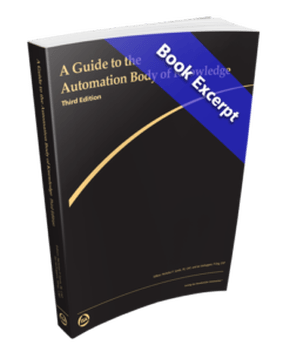AutoQuiz is edited by Joel Don, ISA's social media community manager.
This automation industry quiz question comes from the ISA Certified Automation Professional (CAP) certification program. ISA CAP certification provides a non-biased, third-party, objective assessment and confirmation of an automation professional's skills. The CAP exam is focused on direction, definition, design, development/application, deployment, documentation, and support of systems, software, and equipment used in control systems, manufacturing information systems, systems integration, and operational consulting. Click this link for more information about the CAP program.
What is the significance of the fieldbus intrinsic safety concept (FISCO)?
a) It decreases the number of field devices per trunk compared with traditional area classification practices
b) It simplifies the rules governing energy storage in field cables and makes more power available to the fieldbus trunk
c) It increases safety requirements for live-working on a trunk and spurs
d) It standardizes safety documentation for fieldbus circuits in Division 2 hazardous areas, in which the explosion hazard is expected only in abnormal circumstances
e) none of the above
Even though a FISCO approach allows more power on a segment trunk cable than the entity approach (field barrier approach), FISCO requires each part of the system, including devices, cables, and power conditioners, to be FISCO certified. In addition, FISCO design and installation rules must be strictly followed. The FISCO installation is still bound by the requirement that no more than 115 mA can be delivered through a segment installed in a hazardous area, so approximately the same number of devices (four or five) can be installed on a single segment.
The correct answer is B. It simplifies the rules governing energy storage in field cables and makes more power available to the fieldbus trunk. FISCO considers the segment circuit as a whole, including power sources, cabling, devices, and connectors.
Reference: Nicholas Sands, P.E., CAP and Ian Verhappen, P.Eng., CAP., A Guide to the Automation Body of Knowledge. To read a brief Q&A with the authors, plus download a free 116-page excerpt from the book, click this link.
About the Editor
Joel Don is the community manager for ISA and is an independent content marketing, social media and public relations consultant. Prior to his work in marketing and PR, Joel served as an editor for regional newspapers and national magazines throughout the U.S. He earned a master's degree from the Medill School at Northwestern University with a focus on science, engineering and biomedical marketing communications, and a bachelor of science degree from UC San Diego.





